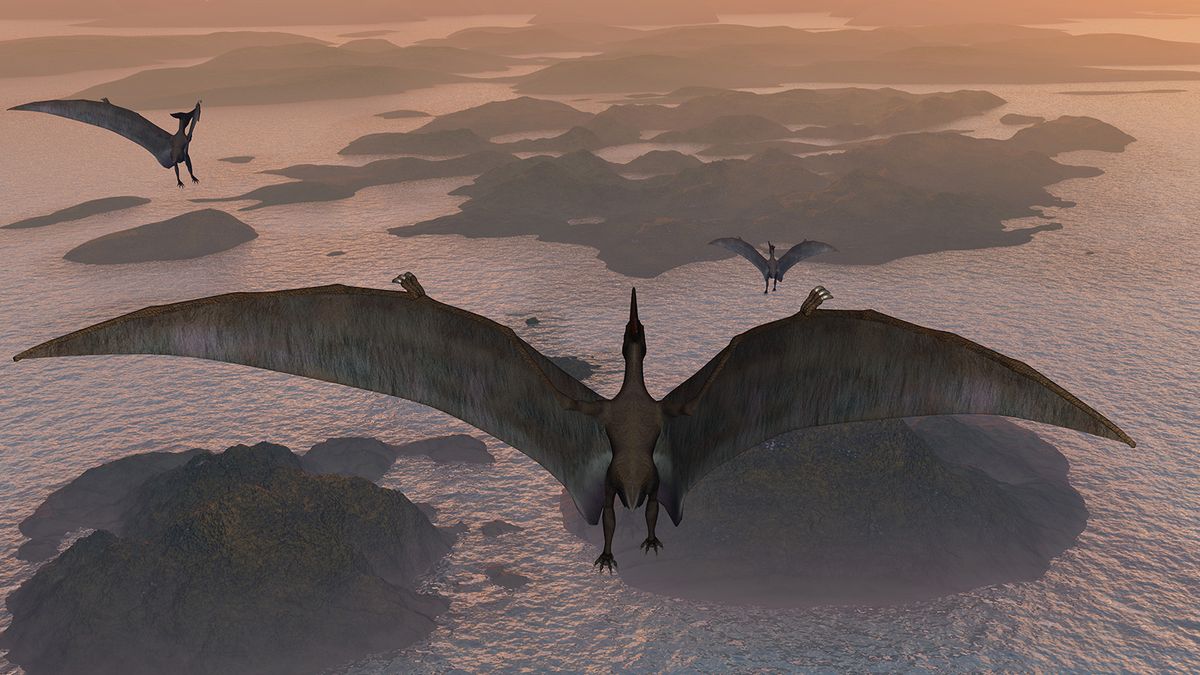
Pteranodon is one of the most famous pterosaur genera and lived during the Late Cretaceous period, approximately 86 to 84.5 million years ago.
What Did Pteranodons Look Like?
A large pterosaur by any standard, it boasted an estimated adult wingspan of over 20 feet (6 meters) and had powerful flight muscles anchored to an enormous breastbone (sternum) that supported long-distance flight.
Its most defining features include a long beak, toothless jaws and a dramatic cranial crest. These bony crests may have played a role in species recognition or aerodynamics, with adult males often exhibiting larger crests than adult females.
Pteranodon Fossils
Some fossil specimens also show wide pelvic canals in females, possibly linked to egg-laying adaptations. Pteranodon longiceps, a specific species in this order, is known for its upright crest and streamlined skull.
The fossil record includes nearly complete skulls, articulated skeletons, and other fossil remains.
These have given paleontologists insights into features like the upper arm bones, hind limbs, and narrow hips. One specimen even preserved the winged finger structure that supported their skin and muscle membrane wings.
These adaptations made Pteranodon a formidable member of the larger clade of flying reptiles.
A Seriously Big Flyer
Pteranodon is considered one of the larger flying reptiles (though it was significantly smaller than azhdarchids such as Quetzalcoatlus).
Some researchers believe that the combination of its powerful flight muscles and lightweight bone structure allowed it to travel long distances over prehistoric seas, hunting small animals that drifted near the water’s surface.
These behaviors draw interesting comparisons to modern birds, although they belong to different evolutionary lineages.











